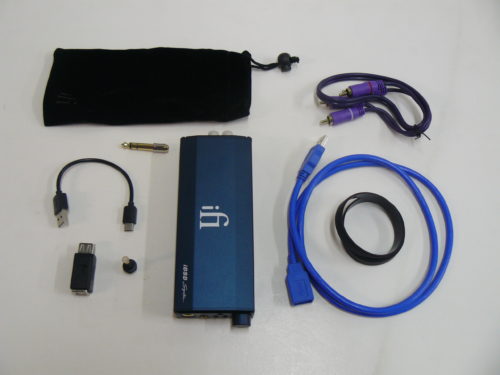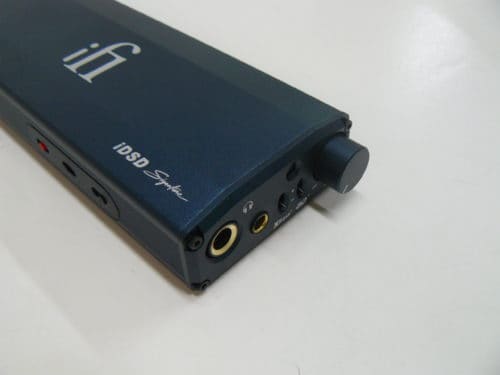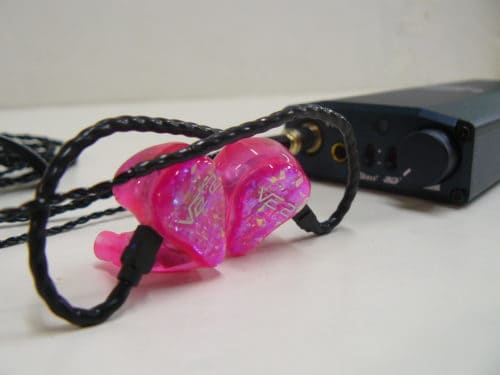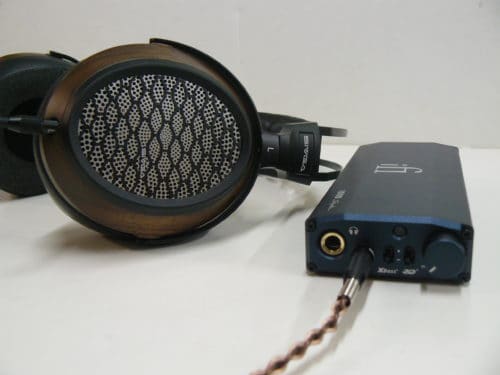I have used quite a variety of iFi’s headphone amps and DACs to review certain headphones and IEMs. The Zen Can was the last device from iFi that really made an impression on me, and now we have their latest release. The IDSD Black Label came out in 2017 and was the first upgrade to the popular micro IDSD from iFi. Now in 2020, we have the new Signature edition looking to make further improvements to the IDSD micro-series. Let’s see how the Signature stacks up.

What You Get
The packaging contents are varied and should come as no surprise to those familiar with previous IDSD products. After removing the box top you’ll find a 3 panel, a double-sided manual that’ll be helpful in navigating the Signatures many features. You’ll then see two white boxes that contain the rest of the Signature’s contents. The bottom box contains your USB-C charging cable, mini-B adapter, and quarter-inch jack. The top box contains your RCA cable, Toslink mini-plug adapter, two rubber bands, and a soft velour pouch.

Build
The most immediate difference you’ll see in the appearance of the Signature is the new space blue finish. With this new coloration, I don’t think the micro IDSD has ever looked sleeker. With the Signature’s solid aluminum chassis, the micro IDSD has also never felt better to play within the hand. The Signature feels durable and appears more than able to last you through years of high-fidelity listening.
The front of the system holds the Signature’s headphone outputs, as well as iFi’s patented XBass and 3D switches. Above that is an LED that will indicate the sampling frequency you’re currently using for playback. There are 7 different colors that will light up. For example, magenta indicates MQA, and red indicates DSD512. Finally, there’s the volume dial, which also acts as an on/off switch. It feels responsive and moves smoothly, showing why it’s better than any digital volume control.
There are a few side controls I’d also like to touch on. The Signature has three switches, each containing three different modes. First, there’s power mode. This setting will give more sensitive headphones and IEMs a more substantial drive. The turbo and eco setting will fare better with more demanding impedances, with turbo being relegated to headphones and eco to IEMs. Then there’s a normal setting for medium sensitivity outputs.
The next switch is for digital filters. You have bit-perfect, minimum phase, and standard. It is recommended that bit-perfect is best used for PCM playback and standard for measurements. Lastly, there’s the IEM match, which acts as the eco switch on power mode. High sensitivity and ultra-high sensitivity earphones can be matched to the output voltage of the Signature, giving your IEMs a needed boost in gain before cranking up the volume dial.

Ins and Outs
On the face of the device, you’ll find a single-ended quarter-inch output and a balanced 4.4mm out right next to it. Thankfully the Signature comes with that 6.3mm adapter so any 3.5mm headphones you might have can be easily paired. There’s no 4.4mm adapter though, but an output is there for those who want it. The rear of the Signature houses an S/PDIF 3.5mm coaxial input for the Toslink mini-plug connection. The last analogue output is your RCA output, and sitting next to it is the USB 3.0 type A input port. With the right attachments, you’ll be able to connect a phone via USB to a lightning adapter or USB OTG for Apple and Android devices. I mainly used the USB 3.0 port to connect to my PC streaming Tidal in MQA sampling mode.

Design
There are a lot of components that go into making up the Signature’s interior design. Two DAC chips are implemented in an interleaved configuration that sends four signals, two per channel. This provides a lower noise floor with improved channel separation, better highlighting musical detail and micro-dynamics. iFi also delivers major jitter-eradication tech applied to its digital engine. They’ve made sure the signal flow of the Signature is finely tuned to make the most out of the headphones’ timbre and detail retrieval. They lead the way in high-class low ESR with high stability. The S-Balanced circuitry also delivers significant upgrades to sound signature, with balanced outputs eliminating cross-talk and distortion, creating a clean and clear response.

Sound Quality
I’m going to do something different this time around. I’ve tested a variety of different headphones and IEMs with the Signature, and I want to go into how each of them sounded separately from each other. This DAC/amp handles each model differently, aiming to make the most out of each soundstage and signature. The headphones I’ve tested are the Sivga P-II, Sennheiser 660s, and the Vision Ears VE2. Let’s see how each of them responded to the IDSD Signature.

Out of everything I tested, I was mostly looking forward to how IEMs fared with the Signature since the added switches for high and ultra-high sensitivity earphones feel like a big feature. With the VE 2, I had to use the high sensitivity mode in order to avoid cranking the volume dial up to get a nominal gain that was comfortable. In terms of the general timbre, the Signature helped bring a bit more depth to the soundstage, as well as bring up some of the more recessed mids on the VE 2. It’s not a substantial difference, but just noticeable depending on your playback formats. Switching on 3D caused some musical elements to feel unfocused and inauthentic, failing to represent the soundstage well. XBass added some resonance to the VE 2’s thick lows, but I preferred the way it sounds with the Signature naturally.

The 660s retains all of its best qualities when paired with the Signature. Soundstage and spatial imaging are slightly enhanced by 3D mode, creating a more present bubble of stereo immersion. All of the more subtle separation elements are more clear on the Signature, such as semi-holographic imaging that gives instruments and effects a wider field of play around your head. Although the 660s already contains a meaty bass, XBass provided an even tighter grip on the sound signature. Rumble effects added a touch of sub-bass that added more gravity to the sound, and you’ll find that no clarity is lost in response.

Saving the best for last, the experience I had pairing the P-II and the Signature was pretty intense. Using the balanced 4.4 connection created an unbelievably crisp response that kept me coming back to it. It might not be for everyone, but the treble and upper mid extension sounded divine with the Signature, as the airy, sparkly textures resonated throughout the serene and intensely detailed soundstage. Turning on 3D mode even added some more top end resolution that helped extend the crisp treble even more. It also deepened the stage to a wild degree, accomplishing a more analytical stereo image. Using this feature obtained the ideal experience for listening to live music.
I was listening to King Crimson’s Live In Toronto, and the performance just sounded so mesmerizing with all of the instrumentations layering over each other in that expansive live space that you can feel surrounding you. Let’s also not forget XBass, which helped deepen the lows to a core that added a more substantial punch to the P-II. The rich bass is complemented with harder impacts where they count, such as in pounding percussion or an extra lift to explosive hard rock breakdowns.
Summary
My experience with the Signature proved to be one that I can see sustaining through a multitude of headphone testing. Each pairing brought something new to the table through the sound signature and stage. XBass and 3D aren’t always going to be a complete success with every headphone or IEM, but the Signature uses them dynamically. And with pairings like the P-II, it was hard to ever go back to listening without them. The balanced connections are crystal clear, and the multiple side controls help the signal obtain a comfortable nominal gain. As an upgrade from the Black Lable, it’s also worth checking out, as I believe certain build aspects are significantly improved. This is definitely an amp/DAC worth investing in, as the $649 price point leaves you with a capable and hopefully, lost lasting device.

Pros and Cons
Pros: Build quality, balanced outputs, variety of features
Cons: Picky with IEMs
The iFi Micro IDSD Signature is available at Audio 46.
MAJORHIFI may get a commission from retail offers.
MAJORHIFI may receive commissions from retail offers.








